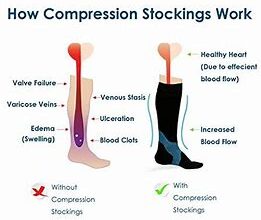Shulte tables are a popular tool used in memory training and cognitive development. The objective of practicing with Shulte tables is to improve an individual’s reaction time, focus, and agility. They consist of a grid of numbers or letters arranged randomly. The challenge lies in quickly locating and identifying the numbers or letters in the correct order, whether it be from left to right or in a zigzag pattern.
One of the most important aspects of using Shulte tables is understanding the different difficulty levels they offer. The size of the grid can range from smaller tables, consisting of 5×5 grids, to larger ones with 9×9 grids. The difficulty level can be increased by increasing the size of the grid or by introducing time constraints. This allows users to continually train their memory and visual-perceptual skills, pushing themselves to perform better each time.
Shulte tables are beneficial for individuals of all backgrounds and sizes. Regardless of one’s problem-solving abilities or level of experience, practicing with Shulte tables can help improve their cognitive performance. This training not only enhances memory recall and peripheral vision but also promotes a sharper mindset and better focus.
Practicing with Shulte tables can be a challenging but rewarding experience. The tables are designed to include various patterns and sequences, such as diagonal lines, to further challenge individuals. By practicing consistently and keeping track of their performance, individuals can see improvements in their reaction time and concentration.
In conclusion, Shulte tables are an effective tool for improving memory and cognitive abilities. Their purpose is to challenge individuals to quickly identify and locate numbers or letters in a randomized grid. By practicing with Shulte tables, individuals can train their memory, focus, and agility, ultimately leading to better problem-solving skills and overall cognitive performance.
Understanding Shulte Tables: Enhancing Cognitive Abilities
Shulte tables are a valuable tool for improving cognitive abilities, such as attention, focus, and mental scanning. This engaging activity involves locating numbers or letters in a grid of randomly arranged cells. By practicing with Shulte tables, users can enhance their ability to quickly scan and find information, improving their cognitive skills in various aspects.
One of the key benefits of using Shulte tables is the improvement in attention and focus. The grid’s size and the number of cells can be adjusted to increase the difficulty level, challenging individuals to stay focused and find the target numbers or letters within a certain time limit. By continuing to practice, users can train their minds to remain focused and avoid distractions, improving their ability to concentrate on the task at hand.
Another aspect that Shulte tables help improve is mental scanning. By scanning the grid for the target numbers or letters, individuals can enhance their peripheral vision and scanning abilities. This skill is useful in many activities that require quickly identifying information, such as reading, driving, or searching for items in a cluttered environment. Shulte tables provide a focused task to practice mental scanning and improve its efficiency.
Additionally, Shulte tables enhance cognitive abilities by improving speed and accuracy in information processing. As individuals practice finding the target numbers or letters in the grid, they can quickly process visual information and make accurate decisions. This improved processing speed and accuracy can be beneficial in daily tasks that require quick decision-making, such as problem-solving or multitasking.
Furthermore, practicing with Shulte tables can help individuals develop a relaxed and focused mindset before engaging in other activities. By spending a few minutes looking for numbers or letters in the grid, individuals can calm their minds and enter a state of concentration. This mindset can be carried into other tasks, helping individuals stay calm and focused, even in challenging situations.
The motivation to improve scores and achieve better results is another benefit of using Shulte tables. Individuals can track their progress by recording the time taken to complete the grid or the number of mistakes made. With consistent practice, users can see their scores improve, which can boost motivation and encourage further engagement with the activity.
Moreover, the use of various backgrounds and grids allows individuals to find what works best for them. Some users may prefer grids with letter targets, while others may find numbers more comfortable to work with. By providing a variety of options, Shulte tables cater to individual preferences, making the practice more enjoyable and effective.
In conclusion, Shulte tables are a valuable tool for enhancing cognitive abilities. By practicing with these grids, individuals can improve their attention, focus, mental scanning, speed, and accuracy in information processing. Additionally, Shulte tables help individuals develop a relaxed and focused mindset, motivating them to continue practicing and improving their scores. With the ability to customize the grids and backgrounds, individuals can find what works best for them, making the practice more engaging and effective.
What are Shulte Tables
Shulte Tables are a mindset and agility training tool that consists of a set of exercises designed to improve mental performance. The goal of Shulte Tables is to help individuals enhance their ability to scan and react quickly to information in a relaxed and focused manner.
The tables consist of a grid of numbers or letters that are randomly arranged. The order in which the numbers or letters are placed is progressive, meaning that they become more challenging as the level increases. The tables can be used to train individuals of all backgrounds and ages, and they are often used by athletes, students, and professionals who want to improve their mental agility and decision-making skills.
The purpose of using Shulte Tables is to train the brain to avoid distractions and to keep focused on completing a task. By using the tables, individuals can improve their ability to locate and scan information quickly and accurately, which is crucial in many aspects of life, such as work, sports, and daily activities.
When using Shulte Tables, individuals start by trying to identify the numbers or letters in the table in a specific order. As they continue practicing, they can challenge themselves by trying to locate the numbers or letters randomly. Regular practice with Shulte Tables can help improve reaction time, concentration, and mental flexibility.
The benefits of using Shulte Tables include improved focus, increased mental agility, and better decision-making. Users can track their performance by recording their scores and attempting to improve over time. This allows individuals to measure their progress and see how they are improving their mental skills.
Overall, Shulte Tables are a useful tool for training and challenging the mind. Whether you are looking to improve your performance in a specific area or simply want to keep your mind sharp, using Shulte Tables can help you achieve these goals. With its progressive difficulty and regular practice, Shulte Tables provide an effective way to train the mind and improve mental performance.
Benefits of Shulte Tables

The use of Shulte Tables offers some significant benefits for individuals looking to enhance their cognitive abilities and improve mental agility. When using Shulte Tables, users are able to tap into various aspects of their mindset and train their brain to continue improving accuracy and speed in problem-solving tasks.
One of the key benefits of utilizing Shulte Tables is the ability to improve memory. By practicing with the randomly arranged grid of numbers or letters, users can enhance their memory and make fewer mistakes in completing the tasks at hand. The progressive nature of the exercises allows users to start with smaller grid sizes and gradually move on to larger ones, challenging themselves to remember more information and complete the tasks faster.
Another benefit of utilizing Shulte Tables is that they provide a tool for practicing focus and concentration. By using a timer and eliminating distractions, users can train their minds to stay focused on the task at hand and improve their ability to ignore peripheral stimuli. This enhanced focus can be highly beneficial in various areas of life, such as work or studying, where maintaining concentration is crucial.
In addition to improving memory and focus, Shulte Tables also offer benefits for problem-solving skills. Through regular practice, individuals can develop a systematic approach to analyzing and solving problems quickly and efficiently. The random arrangement of numbers or letters in the tables helps users to develop a flexible mindset, allowing them to adapt their problem-solving strategies to different scenarios.
Shulte Tables also serve as a motivating tool for users, as progress can be easily tracked. By keeping track of their scores and speed when completing the tables, users can see their improvement over time, which can be highly motivating and encourage them to continue practicing. Additionally, the challenging nature of the tables keeps users engaged and motivated to improve their scores and speed.
In conclusion, the benefits of using Shulte Tables are numerous. They provide a structured and progressive way to improve memory, focus, and problem-solving skills. Additionally, they serve as a motivational tool and allow users to track their progress. By practicing with Shulte Tables, individuals can enhance their cognitive abilities and ultimately achieve their goal of improving mental agility.
How to Use Shulte Tables
Shulte Tables are a valuable tool for improving various cognitive skills, such as concentration, problem-solving, and decision-making. They consist of grids of numbers or letters arranged in an ascending order, and their purpose is to help individuals better understand patterns and improve their accuracy in identifying them. By practicing with Shulte Tables, individuals can increase their agility in making decisions and improve their overall performance.
The steps to effectively use Shulte Tables are as follows:
- Start with a relaxed mindset: Before beginning any Shulte Table exercise, it is crucial to be in a relaxed state of mind. Take a few deep breaths and clear your thoughts before getting started.
- Choose a table size: Shulte Tables come in various sizes, ranging from smaller grids to larger ones. It is recommended to start with a regular grid size and gradually increase the difficulty as you progress.
- Focus on the center: The goal of Shulte Tables is to find the numbers or letters in ascending order, starting from the center of the grid and moving towards the outer edges. Keep your eyes fixated on the center to avoid distractions.
- Practice concentration: Concentration is key when using Shulte Tables. Avoid any external distractions and try to maintain your focus solely on the task at hand.
- Complete each grid: Work your way through each grid by identifying the next number or letter in the sequence. This will help improve your problem-solving skills and increase your accuracy over time.
- Track your progress: Keep track of your scores and aim for the maximum possible score in each exercise. Regularly monitoring your progress will allow you to see improvements and set new goals for yourself.
The benefits of using Shulte Tables are numerous. They help improve concentration and focus, enhance decision-making abilities, and increase cognitive agility. They can be used by individuals with various backgrounds and within different settings, such as educational institutions, workplaces, or personal practice.
In summary, practicing with Shulte Tables can significantly improve cognitive skills and provide numerous benefits. By understanding the steps to effectively use them and continuously challenging yourself with increasing difficulty levels, you can enhance your problem-solving abilities and improve your overall performance.
Getting Started with Shulte Tables
Shulte Tables are an enhanced version of regular exercises that can help improve various cognitive skills. In this guide, we will explore how to get started with Shulte Tables and the benefits they offer.
The first step to getting started with Shulte Tables is to understand their purpose. Shulte Tables consist of a grid of randomly arranged numbers or letters. The objective is to find and click on these numbers or letters in ascending order as quickly as possible. This exercise helps train and improve memory, concentration, peripheral vision, and visual-perceptual skills.
To begin using Shulte Tables, start by selecting a specific level or size. The larger the size, the more challenging the exercise becomes. You can also choose between numbers or letters depending on your preference or the specific skill you want to improve.
Once you have selected the appropriate level and type, start the exercise by clicking the “Start” button or timer. The numbers or letters will be displayed on the screen, and your objective is to find and click on them in ascending order.
While performing the Shulte Table exercise, it is important to stay focused and avoid distractions. Find a quiet and comfortable environment where you can fully concentrate. Additionally, motivate yourself by setting goals and trying to achieve better scores each time you practice.
When using Shulte Tables, it is recommended to start with smaller sizes or easier levels if you are a beginner. As you become more comfortable and improve your skills, gradually increase the difficulty level to challenge yourself further and gain maximum benefits from the exercise.
By regularly practicing Shulte Tables, you can enhance your cognitive abilities and improve concentration, memory, and visual-perceptual skills. They are a useful tool for individuals of all backgrounds and can help you train your brain and achieve better cognitive performance.
In conclusion, getting started with Shulte Tables involves a few simple steps. Select the appropriate level and type, find a comfortable and distraction-free environment, set goals to stay motivated, and gradually increase the difficulty level. With regular practice and dedication, you can train your brain and improve various cognitive skills.
Tips for Effective Use of Shulte Tables
The purpose of Shulte Tables is to enhance visual-perceptual skills through the progressive challenge of finding numbers or letters in a grid. To make the most out of this training tool, here are some tips:
1. Set a Goal and Track Your Progress: Determine what you want to achieve with Shulte Tables, whether it’s increasing your scanning speed, improving your concentration, or enhancing your problem-solving skills. Keep track of your performance to monitor your progress over time.
2. Use a Timer and Start Randomly: Use a timer to create a sense of urgency and simulate real-life situations where visual scanning is crucial. Randomly select a starting point within the grid to challenge your peripheral vision and test your ability to quickly identify numbers or letters.
3. Vary the Sizes and Levels of Difficulty: Shulte Tables come in different sizes and levels of difficulty. Start with smaller grid sizes and gradually increase the complexity as you become more comfortable. This will help you develop your scanning skills and pattern recognition abilities.
4. Focus on the Center: Shulte Tables are designed to emphasize the center of the grid, where users typically find numbers or letters more quickly. Practice clicking on these elements first and then expand your visual field outward to cover the entire grid.
5. Regularly Challenge Yourself: Consistency is key when using Shulte Tables. Regularly incorporate these exercises into your training routine to build agility, concentration, and visual-perceptual skills. The more you practice, the better you will become.
6. Utilize Problem-Solving and Pattern Identification: Shulte Tables offer versatile tasks that require problem-solving and pattern identification. Train your mind to quickly identify and follow patterns, making connections between neighboring cells and numbers/letters.
7. Take Breaks and Rest: Remember to take breaks and rest your eyes regularly during Shulte Tables training. Staring at the grid for extended periods can strain your eyes and decrease your focus. Give yourself short breaks to maintain a fresh mindset and improve overall performance.
8. Incorporate Peripheral Vision Exercises: Shulte Tables mainly focus on central vision, but it’s important to also train your peripheral vision. Incorporate exercises such as scanning the grid from the edges to improve your overall visual field awareness.
Overall, using Shulte Tables regularly can help enhance your visual-perceptual skills, concentration, and problem-solving abilities. By following these tips and implementing Shulte Tables into your training routine, you can track your progress, increase your agility, and improve your visual scanning abilities.



